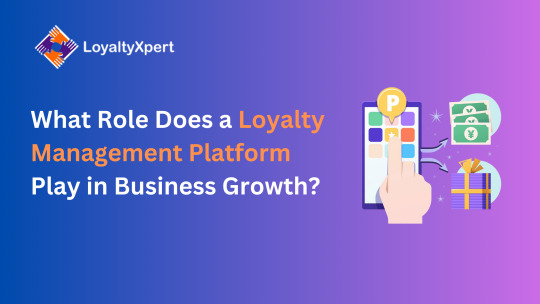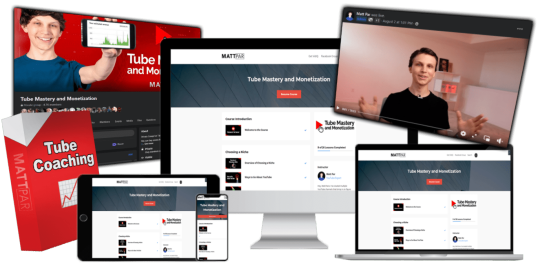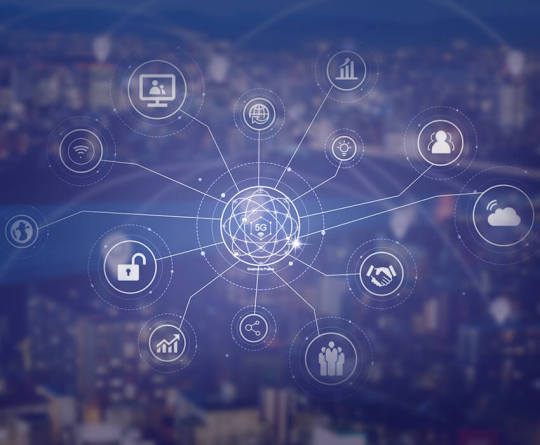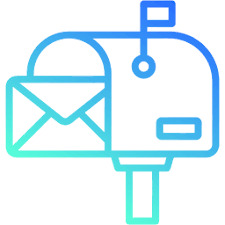#loyalty rewards program software
Explore tagged Tumblr posts
Text

NetSuite Loyalty Referral Program - NetScore Technologies
NetScore Loyalty Rewards for NetSuite helps you engage customers by offering them loyalty referral reward points and create a loyal customer base
Know More: https://bit.ly/4aZUghb
#loyalty rewards program for small business#loyalty rewards software#loyalty rewards program software#ecommerce loyalty rewards program#loyalty rewards management#loyalty rewards management system
0 notes
Text
What Role Does a Loyalty Management Platform Play in Business Growth?

Let’s face it—winning a customer’s attention is hard, and keeping it? Even harder.
That’s why businesses today are turning to loyalty programs not just to keep customers happy, but to build real, long-lasting relationships. But running a loyalty program manually or across disconnected systems can get messy fast. That’s where a loyalty management platform comes in—and trust us, it’s a game-changer.
So, What Exactly Is a Loyalty Management Platform?
Just picture having a brainy assistant keeping tabs on what your customers are buying, rewarding their loyalty, and getting you to know them better—right in one convenient location. That's what happens with a loyalty management platform. It's a software program where you can craft, execute, and optimize loyalty programs without batting an eyelid.
No matter if you're offering points, cashback, tiered rewards, or exclusive benefits, the platform streamlines it all with ease and elegance.
Why It Matters for Business Growth?
Because loyal customers aren't repeat shoppers—they're your greatest champions.
A good loyalty management system will:
Make your customers feel valued with timely, personalized rewards
Turn occasional buyers into loyal brand enthusiasts
Spur repeat buys that drive revenue and lower marketing expenses
Simply put, it keeps your customers coming back—and that's where real growth occurs.
Must-Have Features of a Great Loyalty Management Platform
Break it down. Here's what leading companies want:
1. Easy-to-Use Dashboard
No one needs to spend hours learning software. Top platforms make it a breeze to create offers, monitor performance, and adjust rewards whenever.
2. Smart Customer Insights
Good loyalty programs are data-driven. A solid platform gathers customer behavior and assists you in tailoring experiences that really count to them.
3. Omnichannel Support
Regardless of whether your customers shop online, in-store, or on their mobile devices, they should receive the same experience. A new loyalty management solution makes sure everything's connected and consistent.
4. Time-Saving Automation
Configure birthday rewards, inactivity reminders, or referral rewards—once. Let the platform handle it from there.
5. Scalable and Flexible
Want to start small? Great. Want to go big? Even better. Your loyalty program software should scale with you.
Actual Benefits You Can Rely On
Increased Retention
Loyal customers remain longer—and spend more.
More Word-of-Mouth
Individuals believe in word-of-mouth recommendations. A clever loyalty program makes your customers advocates.
Improved ROI
It is cheaper to retain a customer than to acquire a new one. That's simply good business.
Final Thoughts
A loyalty management platform is not a nice-to-have—it's your secret strategy to differentiate yourself in a competitive marketplace. It makes you smarter about your customers, rewards them in ways that matter, and creates lasting trust. If you really want to grow, spending money on a platform that simplifies loyalty, makes it personal, and makes it powerful is one of the best investments you can make.
#Loyaltymanagementplatform#Loyalty Management System#Loyaltymanagementsoftware#Loyalty Program Software#Loyalty Rewards Program
0 notes
Text

OKEN is an App SaaS platform that empowers businesses to implement loyalty programs and engage with customers through custom-designed mobile apps. We have leveraged our core learnings and industry expertise in loyalty programs to develop a highly configurable and engaging app backend platform.
https://www.wovvtech.com/products/oken/
0 notes
Text
The Benefits of Hotel and Flight Booking Flights Through Expedia

Click here to book your flight and save up to 30% discount and even more with the app
The Benefits of Hotel and Flight Booking Flights Through Expedia
When it involves booking flights, Expedia is a cross-to platform for many tourists searching for comfort, reliability, and aggressive pricing. With a plethora of alternatives and functions tailored for seamless travel stories. Expedia gives numerous blessings that make it a pinnacle preference for flight reservations. In this blog put up, we can discover the key benefits of booking flights through Expedia, which includes their Price Match Guarantee. The comfort of booking flights and inns together, and the enticing rewards in their loyalty program.
Peace Of Mind with Expedia’s Price Match Guarantee:
Price Match Guarantee is a function that sets Expedia other than different tour booking systems. With this guarantee, Expedia promises to suit the price if you find a cheaper flight someplace else within 24 hours of booking. This ensures that you are getting the first-class feasible deal without the need for significant charge comparisons. Expedia prioritizes the peace of mind of travelers, saving them the trouble of looking multiple web sites and providing the self-belief that they may be paying a competitive charge for his or her flights.
Exploring The Benefits of Booking Flights and Accommodations Together:
Expedia knows that travelers often require more than just flights to finish their journey. To cater to this need, Expedia lets in vacationers to with no trouble book flights and accommodations collectively in a single package. By bundling these services, tourists no longer best save time but also stand to benefit from discounted quotes. Booking flights and lodges collectively thru Expedia can bring about tremendous savings, allowing you to stretch your tour budget in addition without compromising on excellent. The seamless integration of these offerings guarantees a problem-unfastened booking experience and allows you to consciousness on the exciting elements of your ride.
Insider Deals and Rewards Through Expedia’s Loyalty Program: Expedia believes in worthwhile loyal customers and gives a loyalty program that offers unique benefits and insider deals. By enrolling within the Expedia Rewards program, travelers can earn points for each dollar spent on flights, accommodations, and sports, that can later be redeemed for discounts or maybe unfastened tour. This loyalty software allows you to make the most of your tour price range at the same time as gaining access to different discounts and perks. Whether you are a frequent traveler or an occasional explorer, Expedia’s loyalty software guarantees that your travel experiences are not most effective handy but also profitable.
Click here to book your flight and save up to 30% discount and even more with the app








#aircraft#airplane#airport#boeing#boeinglovers#b787#dreamliner#unitedairlines#airplanephoto#aeroplane#avgeek#aircraftphoto#telaviv#bengurionairport#israel#tlv#spotting#spotter#megaplane#instaplane#instaviation#instagramaviation#aviationphotography#aviation#aviationlovers#aviationdaily#boeing787#airportlife#ramplife#instaaviation
6 notes
·
View notes
Text

Why Self-Service Kiosks Are the Future of Hospitality and Retail !!
The retail and hospitality industries are constantly evolving to meet the demands of modern consumers. As businesses strive for efficiency, convenience and improved customer experience, self-service kiosks have emerged as a game-changing solution. From quick-service restaurants to retail stores and hotels, kiosks are revolutionizing how customers interact with businesses, making transactions smoother, reducing wait times and enhancing overall satisfaction.
The Growing Demand for Self-Service Solutions
With the rise of digital transformation, consumers now expect seamless, tech-driven interactions in every aspect of their lives. Self-service kiosks address this demand by providing :
Speed and Efficiency – Customers can place orders, check-in or make payments quickly without waiting in long lines.
Reduced Labor Costs – Businesses can optimize staff allocation, reducing operational expenses while maintaining quality service.
Enhanced Customer Experience – Customizable interfaces and multilingual support ensure a smooth and personalized experience for diverse audiences.
Improved Accuracy – Self-service kiosks eliminate human errors in order placement, payment processing, and service requests.
How Kiosks Are Transforming Retail Retailers are integrating self-service kiosks to streamline operations and improve shopping experiences. Some key benefits include:
Faster Checkout – Self-checkout kiosks minimize congestion at traditional cash registers, reducing wait times.
In-Store Navigation & Product Lookup – Customers can quickly locate products and access real-time stock availability.
Loyalty Program Integration – Kiosks enable customers to register for rewards programs, check points, and redeem offers effortlessly.
Seamless Omnichannel Experience – Integration with e-commerce platforms allows customers to order online and pick up in-store.
Upselling and Cross-Selling Opportunities – Kiosks can suggest complementary products or promotions based on customer preferences.
The Impact of Kiosks in Hospitality In the hospitality industry, self-service kiosks are redefining guest experiences by offering:
Faster Hotel Check-Ins and Check-Outs – Guests can skip front desk lines and access rooms with digital keys.
Self-Ordering at Restaurants – Quick-service and fast-casual restaurants use kiosks to enhance order accuracy and speed.
Automated Ticketing and Reservations – Kiosks streamline the process for theme parks, movie theaters and travel agencies.
Personalized Customer Interactions – AI-powered kiosks can recommend services, upgrades, or add-ons based on customer preferences.
Multi-Functionality – Kiosks can serve as concierge services, providing guests with local recommendations and travel assistance.
The Future of Self-Service Kiosks The future of self-service kiosks is driven by technological advancements, including:
AI and Machine Learning – Personalized recommendations and predictive analytics will enhance user engagement.
Contactless and Mobile Integration – NFC payments and mobile app connectivity will further simplify transactions.
Biometric Authentication – Facial recognition and fingerprint scanning will improve security and user convenience.
Sustainable and Eco-Friendly Kiosks – Digital receipts and energy-efficient designs will support environmental initiatives.
Cloud-Based Management – Remote monitoring and software updates will enable seamless kiosk operations.
Voice-Activated Interfaces – Enhancing accessibility for all users, including those with disabilities.
Conclusion Self-service kiosks are no longer a luxury but a necessity for businesses aiming to enhance efficiency, reduce costs and improve customer satisfaction. As the retail and hospitality industries continue to evolve, adopting kiosk technology will be key to staying competitive and meeting the ever-growing expectations of tech-savvy consumers.
What are your thoughts on the future of self-service kiosks? Share your insights in the comments below!
#PanashiKiosk#KioskDesign#TrendingDesign#InnovativeKiosks#RetailDesign#CustomerExperience#DigitalKiosks#UserFriendlyDesign#SmartRetail#DesignTrends#InteractiveKiosks#TechInRetail#KioskSolutions#ModernDesign#BrandExperience#RetailInnovation#DesignInspiration#FutureOfRetail#selfservicekiosk#businesssolution#kiosk#kioskmachine#bankingkiosk#insurancekiosk#telecomkiosk#vendingmachine#interactivetellermachine#QSRkiosk#restaurantkiosk#donationkiosk
2 notes
·
View notes
Text
3 Ways Software Can Revolutionize Your Distribution Strategy.
In today's fiercely competitive business environment, efficient distribution can make or break a company. Customers demand fast, reliable, and cost-effective delivery, and businesses are under constant pressure to optimize their operations to meet these expectations. Distribution management software has emerged as a powerful tool to help companies streamline their distribution processes, reduce costs, and enhance customer satisfaction.
The Power of Integrated Software
While distribution management software alone can provide significant benefits, integrating it with other business systems, such as sales management software and scheme management software, can create a truly synergistic effect. This integrated approach allows for seamless information flow, improved visibility, and enhanced decision-making across the organization.
1. Inventory Management: From Reactive to Proactive
Effective inventory management is the cornerstone of a successful distribution strategy. Distribution management software provides real-time visibility into inventory levels across all locations, eliminating the need for time-consuming manual stock checks and reducing the risk of costly stockouts and overstocking.
With accurate, up-to-the-minute data on inventory levels, businesses can proactively manage their stock, ensuring they have the right products in the right place at the right time. This not only improves order fulfilment efficiency but also optimizes warehouse space utilization and reduces carrying costs.
Furthermore, advanced distribution management software often includes demand forecasting capabilities. By analyzing historical data and market trends, these systems can predict future demand with greater accuracy, enabling businesses to proactively adjust their procurement and production schedules. This helps prevent stockouts during peak seasons and avoids overstocking during periods of low demand.
2. Order Fulfillment: Speed, Accuracy, and Visibility
Customers in today's fast-paced environment want orders to be fulfilled quickly and reliably. Distribution management software empowers businesses to meet these expectations by automating and optimizing various aspects of the fulfilment process.
By automating order processing, businesses can minimize manual data entry, reduce errors, and accelerate order fulfilment times. This not only improves efficiency but also frees up valuable time for staff to focus on more strategic tasks.
Distribution management software also optimizes delivery routes, taking into account factors such as traffic, delivery windows, and vehicle capacity. This ensures that goods are delivered in the most efficient way possible, minimizing transportation costs and reducing delivery times.
Moreover, distribution management software provides real-time tracking information, allowing customers to monitor the progress of their orders and receive accurate delivery updates. This transparency boosts consumer satisfaction and confidence.
3. Sales and Scheme Management: Driving Revenue and Customer Loyalty
Integrating distribution management software with sales management software and scheme management software creates a powerful platform for driving revenue and building customer loyalty.
Scheme management software enables businesses to create and manage targeted promotions and incentive programs. This allows them to incentivize sales, move inventory, and reward loyal customers. By integrating this with distribution management software, businesses can ensure that promotional items are readily available and that orders are fulfilled efficiently.
Sales management software provides sales teams with the tools they need to manage leads, track opportunities, and close deals more effectively. By integrating this with distribution management software, sales teams can gain visibility into inventory levels and delivery schedules, allowing them to provide accurate information to customers and avoid promising delivery dates that cannot be met.
Furthermore, by combining data from distribution, sales, and scheme management software, businesses can gain valuable insights into customer behaviour, sales trends, and product performance. This data can be used to make informed decisions about pricing, promotions, and product development, ultimately driving revenue growth and improving profitability.
Conclusion
Investing in a comprehensive software solution that encompasses distribution, sales, and scheme management can be a game-changer for businesses of all sizes. By embracing the power of automation, optimization, and data-driven insights, companies can streamline their operations, boost sales, and create a loyal customer base.
2 notes
·
View notes
Text
How to Increase Bakery Sales?
Running a successful bakery requires more than just delicious treats. To maximize profits and attract a steady stream of customers, bakeries must implement effective sales strategies. We’ll explore seven proven tactics that can help increase bakery sales and ensure long-term success. Let’s dive in!
Elevate the Visual Appeal:
First impressions matter, and for bakeries, that means presenting mouthwatering delights in an enticing manner. Invest in attractive displays, use eye-catching packaging, and decorate your storefront with tempting visuals. A visually appealing bakery will draw customers in and encourage impulse purchases.
Offer Diverse Product Range:
To satisfy a broad customer base offer a diverse range of products. From classic cakes and fresh bread to gluten-free options, vegan treats, and seasonal specialties, having a variety of items can attract different types of customers and boost sales. Regularly introduce new and innovative creations to keep your offerings fresh and exciting.
Focus on High-Quality Ingredients:
Superior ingredients are the backbone of any successful bakery. Using fresh, high-quality ingredients not only enhances the taste of your baked goods but also showcases your commitment to providing the best to your customers. Highlight the use of premium ingredients in your marketing efforts to build trust and loyalty.
Implement an Online Ordering System with QPOS:
In today’s fast-paced world, convenience is key. Set up an efficient online ordering system, powered by QPOS, that allows customers to pre-order their favourite treats for pickup or delivery.
With QPOS’s integrated online ordering feature, you can offer this convenience to your customers seamlessly. This addition not only increases sales and attracts customers but also streamlines your bakery operations by automating order processing and ensuring accuracy in transactions.
Leverage Social Media Marketing:
Social media platforms are powerful tools for promoting your bakery and engaging with your audience. Create visually appealing posts featuring your appealing creations, share customer reviews, and run special promotions to invite new and existing customers. Encourage user-generated content by photo posting on social media and tagging the shop along, expanding your reach even further.
Host Events and Workshops:
Engage with your community by hosting events and workshops at your bakery. Consider organizing baking classes or festival themed events. These experiences not only provide additional revenue streams but also help build a loyal customer base that will spread positive word-of-mouth.
Implement Loyalty Programs:
Reward loyal customers with a well-designed loyalty program. Offer discounts, freebies, or exclusive access to new products or events. A strong loyalty program can incentivize repeat purchases and turn one-time visitors into dedicated patrons.
Increasing bakery sales involves a combination of smart marketing, high-quality products, and exceptional customer experiences. By implementing these seven strategies – elevating the visual appeal, offering diverse products, using high-quality ingredients, implementing online ordering, leveraging social media, hosting events, and creating loyalty programs – you can drive growth and ensure your bakery’s success. Stay consistent, stay creative, and keep delighting your customers with scrumptious treats!
To increase bakery sales and stay competitive in today’s market, adopting QPOS, a smart restaurant management software is crucial. Integrating Restaurant Business Intelligence and analytics and Cloud Kitchen Management can provide the tools you need to optimize operations, enhance customer experiences, and boost your bakery’s profitability.
2 notes
·
View notes
Text

Running a gym can be a rewarding venture, but there are times when it feels like the fitness gods are testing your resilience. Whether it’s a drop in memberships, unexpected challenges, or an overall slump in revenue, staying afloat in the fitness industry can be tough. Fear not! I’m here to share five effective strategies that can breathe new life into your gym’s sales performance, even when the tide seems against you.
1. Reevaluate Your Pricing Structure
When revenue starts to dip, the knee-jerk reaction is often to cut prices or offer steep discounts. However, a hasty reduction in rates can devalue your services and lead to further financial strain. Instead, reevaluate your pricing structure strategically. Consider creating tiered membership options that cater to a broader range of budgets, while preserving the perceived value of your gym.
Introduce value-added services like personalized training sessions, nutritional guidance, or exclusive access to classes for premium members. A well-structured pricing model can attract new clients without compromising your gym’s integrity.
2. Diversify Your Services
One of the keys to a resilient gym business is diversification. Don’t rely solely on membership fees; explore additional revenue streams. Offer group fitness classes, personal training sessions, or wellness programs. Consider partnering with local businesses for joint promotions or hosting fitness events to attract new clients.
During downtimes or in unforeseen crises, these diversified income sources can help offset losses from membership cancellations or reduced attendance.
3. Ramp Up Marketing Efforts
When sales are struggling, it’s not the time to cut back on marketing; it’s the time to get creative. Invest in a robust online presence with a user-friendly website and active social media accounts. Use content marketing to educate your audience about the benefits of a healthy lifestyle and the value of your gym.
Leverage email marketing campaigns to engage with your existing members and entice them with exclusive offers. Harness the power of data analytics to identify the most effective marketing channels and target demographics.
4. Focus on Member Retention
Customer retention is a golden ticket in the fitness industry. Retaining existing members is often more cost-effective than acquiring new ones. Create an engaging and inclusive gym culture where members feel valued and part of a community.
Implement loyalty programs, rewards systems, and referral incentives to motivate members to stay committed and recruit new clients for you. Regularly solicit feedback and make necessary improvements based on member suggestions.
5. Streamline Operations and Cut Costs
In challenging times, scrutinize your operational expenses. Identify areas where you can trim unnecessary costs without compromising service quality. Analyze your energy consumption, staff schedules, and equipment maintenance. Consider renegotiating contracts with suppliers for better deals.
Furthermore, invest in software solutions that can help you streamline processes, manage member data efficiently, and automate tasks. These tools can reduce administrative burdens and improve overall productivity.
Navigating tough times in the gym business requires creativity, resilience, and a well-thought-out strategy. Don’t lose hope when sales aren’t going your way; instead, reevaluate your pricing, diversify your services, revamp your marketing, prioritize retention, and streamline operations. By implementing these five strategies, you’ll be better equipped to not only weather the storm but also position your gym for long-term success in the ever-evolving fitness industry. Remember, challenges are opportunities in disguise; embrace them, adapt, and emerge stronger than ever.
Conclusion
In the quest to rejuvenate your gym’s sales performance, remember that you don’t have to navigate this journey alone. The expertise and guidance of Fitness Management & Consulting can prove invaluable. Their experience in helping struggling gyms find their way back to profitability can significantly shorten the learning curve and provide you with tailored solutions. By tapping into their knowledge and resources, you’ll gain access to proven strategies, industry insights, and a roadmap for success. Together with your dedication and these five strategies, you can revive your gym’s fortunes and thrive in the competitive fitness landscape. Contact FMC here.
Click here for more details on financing options or call 214-629-7223 or email [email protected] for more information. Or, apply now.
Unlock Your Gyms Full Potential with the Gym Success Blueprint! Get Your Copy Now!
An Outsourced CEO, Turnaround Expert and Author, Jim Thomas is the founder and president of Fitness Management USA Inc., a management consulting, turnaround, financing and brokerage firm specializing in the gym and sports industry. With more than 25 years of experience owning, operating and managing clubs of all sizes, Thomas lectures and delivers seminars, webinars and workshops across the globe on the practical skills required to successfully overcome obscurity, improve sales, build teamwork and market fitness programs and products. Visit his Web site at: www.fmconsulting.net or www.youtube.com/gymconsultant.
2 notes
·
View notes
Text
Maximize Profits: Tube Mastery and Monetization Techniques

YouTube has evolved from a simple video-sharing platform to a vast empire of content creators, reaching millions of viewers worldwide. Aspiring creators and entrepreneurs alike are drawn to the allure of YouTube , seeking fame, fortune, and creative expression. However, achieving mastery on YouTube and monetizing your content requires dedication, skill, and a well-defined strategy.
The first step to mastering YouTube is finding your niche. Identify your passions, expertise, and interests, and then align them with a target audience. Successful YouTubers focus on specific topics, allowing them to create engaging content that caters to the needs and preferences of their viewers.
Creating high-quality content is essential for building a loyal and engaged subscriber base. Invest in good cameras, microphones, and editing software to enhance the production value of your videos. Ensure that your content is informative, entertaining, or both. Be consistent in your uploading schedule to keep your audience engaged.
Knowing your audience is crucial for creating content that resonates with them. Study your analytics to understand your viewers' demographics, preferences, and viewing habits. Listen to feedback, respond to comments, and interact with your community to build a strong connection.
YouTube is a search engine, so optimizing your content for discovery is vital. Use relevant keywords in your titles, descriptions, and tags. Craft eye-catching thumbnails and compelling titles that entice viewers to click on your videos. Collaborate with other creators and participate in community engagement to boost your visibility.
Utilize social media platforms to expand your reach beyond YouTube. Share your videos on Facebook, Twitter, Instagram, and other relevant platforms to attract new viewers. Engage with your audience on social media, fostering a sense of community and loyalty.
Once your channel meets the eligibility criteria (usually 1,000 subscribers and 4,000 watch hours in the last 12 months), apply for the YouTube Partner Program. Being a part of YPP allows you to monetize your content through ad revenue, channel memberships, and Super Chat during live streams.
While ad revenue is an essential aspect of monetization, diversifying your income sources can be prudent. Explore sponsorships, brand deals, merchandise, and crowdfunding through platforms like Patreon. Diversification can provide stability, especially if YouTube's ad policies change or viewership fluctuate.
Becoming a YouTube master is a journey that requires patience and perseverance. Success rarely comes overnight. Keep learning, iterating, and adapting your content strategy. Stay motivated, even during periods of slow growth, as consistency and dedication are keys to long-term success.
YouTube 's policies and algorithms constantly evolve. Stay updated with the platform's guidelines and best practices to avoid strikes or demonetization. Be adaptable to changes, experiment with different formats, and learn from your analytics to improve your content and strategy continually.

Becoming a YouTube master and monetizing your content takes time, effort, and skill. Focus on creating high-quality content, understanding your audience, and optimizing for discovery. Diversify your revenue streams, harness the power of social media, and stay compliant with YouTube s policies. By combining creativity with strategy and staying dedicated to your craft, you can embark on a rewarding journey towards YouTube mastery and potentially turn your passion into a thriving business.
2 notes
·
View notes
Text
Growth Hacking: Fuel To Your Retention Efforts
In today's fast-paced and highly competitive business landscape, customer retention has become a critical aspect of sustaining success. While acquiring new customers is vital for growth, retaining existing customers is equally important for long-term profitability and brand loyalty. This is where growth hacking comes into play as a powerful strategy to supercharge your retention efforts. In this article, we will explore how growth hacking can be utilized to enhance customer retention and foster sustainable business growth.
Understanding Growth Hacking
Growth hacking is a term coined to describe a data-driven and innovative approach to achieving rapid and sustainable business growth. It emerged as a concept in the tech startup world, where resources are often limited, and creative strategies are essential for success. Growth hackers focus on finding unconventional and cost-effective solutions to expand their user base and increase customer retention rates.
The Relationship Between Growth Hacking and Customer Retention
Traditionally, growth hacking has been primarily associated with customer acquisition. However, its principles and techniques can be seamlessly integrated into customer retention strategies. By understanding the customer lifecycle and their pain points, growth hackers can devise creative ways to keep customers engaged and loyal.
Key Strategies to Fuel Your Retention Efforts
Personalization at Scale: Growth hacking involves analyzing customer data to personalize experiences. Tailored recommendations, personalized emails, and custom offerings can make customers feel valued and understood. Utilize customer relationship management (CRM) tools to segment your audience and deliver relevant content.
Leveraging Behavioral Triggers: Growth hackers understand the significance of emotional triggers and behavioral psychology. By identifying key behavioral triggers that prompt customers to engage, you can optimize your retention strategies. For example, setting up personalized onboarding sequences can significantly impact user retention for software applications.
Gamification and Rewards: Gamification techniques, such as loyalty programs and reward systems, can boost customer engagement and retention. Implementing points, badges, and exclusive perks for loyal customers creates a sense of achievement and motivates them to stay connected to your brand.
Continuous Feedback Loop: Engage customers in a continuous feedback loop, seeking their opinions and suggestions for improvement. Not only does this foster a customer-centric approach, but it also helps identify potential issues before they escalate, leading to higher retention rates.
Viral Referral Programs: Encourage your existing customers to refer their friends and family through incentivized referral programs. This not only increases your customer base but also strengthens the sense of community around your brand.
A/B Testing and Iterative Improvements: Growth hacking relies on experimentation and iterative improvements. Implement A/B testing for various retention strategies to identify the most effective ones. Continuous optimization will ensure your efforts remain relevant and impactful.
Data-Driven Insights: Analyze customer data to gain insights into their preferences, pain points, and behaviors. Utilize this data to make informed decisions on how to retain your customers better.
Conclusion
In today's dynamic business environment, growth hacking has evolved from merely being a customer acquisition strategy to a powerful tool for enhancing customer retention efforts. By adopting a data-driven and customer-centric approach, businesses can leverage growth hacking principles to create personalized experiences, foster engagement, and build long-term relationships with their customers. Integrating growth hacking strategies with retention efforts can lead to sustainable growth, increased customer loyalty, and a competitive advantage in the market. Embrace growth hacking, and fuel your retention efforts to drive your business towards long-term success.
2 notes
·
View notes
Text
How does sms mobile marketing work ? - Ejointech
SMS marketing is a type of mobile marketing that uses text messages to send promotional content to customers. It is a direct and personal way to reach customers, and it can be very effective at driving engagement and sales.

SMS marketing works by sending text messages to customers who have opted in to receive them. The messages can contain a variety of content, such as:
Special offers
Product updates
Event reminders
Customer support information
Loyalty program rewards
To send SMS marketing messages, businesses need to use a text messaging service provider. These providers offer a variety of features, such as:
The ability to create and send text messages
The ability to track the delivery and engagement of text messages
The ability to segment customers and send targeted messages
When done correctly, SMS marketing can be a very effective way to reach customers and drive results. Here are some of the benefits of SMS marketing:
High open rates: SMS messages have an open rate of over 90%, which is much higher than other forms of marketing, such as email.
Short attention spans: People are more likely to read and engage with short messages, such as SMS messages.
Personalized messages: SMS messages can be personalized to each customer, which can increase engagement.
Immediate response: Customers can respond to SMS messages immediately, which can lead to faster sales and customer support.
However, there are also some challenges associated with SMS marketing:
Spam: SMS messages can be easily marked as spam, which can reduce their effectiveness.
Cost: SMS marketing can be more expensive than other forms of marketing, such as email.
Regulations: There are a number of regulations governing SMS marketing, which businesses need to be aware of.
Overall, SMS marketing can be a very effective way to reach customers and drive results. However, it is important to use it correctly and to be aware of the challenges associated with it.
Here are some suggestions before sending SMS marketing:
Get consent: Always get consent from customers before sending them SMS messages.
Keep messages short and simple: SMS messages should be short and to the point.
Personalize messages: Messages should be personalized to each customer, as much as possible.
Send relevant messages: Messages should be relevant to the customer's interests.
Track results: Track the delivery and engagement of SMS messages to see what's working and what's not.
By following these best practices, businesses can increase the effectiveness of their SMS marketing campaigns.
Ejointech specializes in providing high-quality SMS gateway hardware, bulk SMS platform, bulk SMS Service, IP proxy gateway, and VoIP gateway with advanced hardware and software solutions for our customers worldwide for 20 years. Get your bulk SMS gateway hardware and software now!
2 notes
·
View notes
Text
NetSuite Loyalty Referral Program - NetScore Technologies
NetScore Loyalty Rewards for NetSuite helps you engage customers by offering them loyalty referral reward points and create a loyal customer base
#loyalty rewards program for small business#loyalty rewards software#loyalty rewards program software#ecommerce loyalty rewards program#loyalty rewards management
0 notes
Text
10 Game-Changing Loyalty Program Trends to Watch in 2025

Loyalty programs have evolved from straightforward point collection models. With advances in technology and increasing customer demands, brands today are compelled to rethink how they build and deploy loyalty. 2025 looks like a breakthrough year, which is going to be replete with innovation and customer-first thinking. In this blog, we dissect the best Loyalty Program Trends that are going to reframe the future of loyalty.
1. Personalization Will Take Center Stage
In 2025, loyalty programs will move beyond segmenting in the simplest way possible. Brands will leverage real-time information, AI, and machine learning to offer, reward, and communicate. Personalized loyalty is no longer a nice-to-have—it's necessary.
2. Omnichannel Loyalty Will Reign
As the consumer seamlessly switches between online and offline channels, omnichannel integration is what Loyalty Program Trends indicate is essential. Irrespective of whether customers are shopping on mobile, in-store, or through social media, their loyalty experience should be the same.
3. Sustainability Rewards Will Gain Momentum
Green consumers are pressuring brands to link rewards to green values. Look for more loyalty programs to include eco-rewards—such as planting trees, carbon offsetting, or giving to green causes—as a part of their loyalty initiatives.
4. Influencer and Affiliate Loyalty Models Will Expand
One of the most exciting loyalty trends is the rise of influencer and affiliate-based programs. Instead of just rewarding buyers, brands are creating systems that incentivize brand advocates, influencers, and affiliates for driving engagement and sales.
5. Tiered and Gamified Loyalty Schemes Will Boost Engagement
Loyalty programs with gamification elements—badges, milestones, spin-to-win—are becoming increasingly popular. Add in tiered benefits, and you’ve got a powerful tool for customer retention and growth.
6. Subscription-Based Loyalty Programs
Brands are merging the realms of loyalty and subscription. These Loyalty Program Trends have customers paying a subscription fee for access to premium rewards, special products, or quicker service—a model that's profitable and sticky.
7. AI-Powered Predictive Loyalty
AI is emerging as a major driver of loyalty marketing. Loyalty professionals forecast 2025 as the year where more companies employ AI to anticipate customer behavior, predict churn, and provide the appropriate incentives at the appropriate moment through their loyalty program software.
8. Hyperlocal and Community-Based Programs
The loyalty business is localizing. Whether it's regional neighborhood rewards or social initiatives, companies are employing localized loyalty programs to forge more emotional connections with their audiences.
9. Crypto and Digital Wallet Integrations
Blockchain and digital currency are starting to take a larger position in loyalty. Look for Loyalty Program Trends that enable users to accumulate crypto rewards or earn loyalty points in digital wallets for easier redemption.
10. More Powerful Analytics & Loyalty Management Platforms
Brands will require more powerful loyalty management platforms in 2025 to track customer insights, segment audiences, and personalize offers automatically. The demand for intelligent, data-based decision-making is greater than ever.
Final Thoughts
These trends in loyalty programs are not merely forecasts; they are markers of the direction the sector is taking. The moment to invest in innovative loyalty tactics and astute loyalty program software that promotes adaptability, integration, and customer-centricity has come if your company wants to stay ahead of the competition in the loyalty space.
You can make sure your loyalty programs promote both retention and long-term company success by keeping up with current trends and collaborating with reliable loyalty specialists.
#Loyalty Program Trends#Loyalty Experts#Loyalty Industry#Loyalty Rewards Program#Loyalty Program Software
0 notes
Text
What Is an SMS API Service? A Beginner’s Guide for Small Businesses
In today's fast-paced digital world, communication is key — especially for small businesses trying to compete with larger players. Whether it’s sending order updates, appointment reminders, or promotional offers, SMS remains one of the most reliable and direct ways to reach customers. This is where an SMS API service becomes a game-changer.
What is an SMS API?
An SMS API (Application Programming Interface) allows businesses to integrate SMS sending capabilities directly into their software, website, or CRM systems, Instead of logging in to a separate platform every time you want to send a message, an SMS API enables automated, real-time messaging through your existing tools.
Why Small Businesses Should Use an SMS API
Automated Communication Schedule SMS campaigns, send real-time alerts, or trigger messages based on user actions — all without manual effort.
Faster Customer Engagement SMS messages have a 98% open rate and are typically read within minutes. This makes it ideal for time-sensitive communication like OTPs, delivery updates, and flash offers.
Easy Integration with Your Business Tools With a robust SMS API service, you can seamlessly connect your business tools, eCommerce platforms, or CRM for smooth and scalable communication.
Cost-Efficient & Scalable Unlike traditional marketing, SMS API pricing is affordable, and you only pay for what you use, making it perfect for startups and growing businesses.
Real-World Use Cases
E-commerce Stores: Send order confirmations and shipping updates.
Healthcare Clinics: Remind patients of appointments automatically.
Educational Institutes: Notify students about class schedules or exam dates.
Retail Brands: Share promotional offers and loyalty rewards via SMS.
Choosing the Right SMS API Provider
Not all services are built the same. For small businesses, it’s important to choose a provider that offers:
Reliable message delivery (99.99% uptime)
DLT compliance and sender ID support
Developer-friendly documentation
Fast onboarding and support
One such trusted provider is BhashSMS’s SMS API service, which offers a user-friendly dashboard, secure integration, and scalable pricing designed to support businesses of all sizes.
Final Thoughts
If your business is still relying on manual texting or email for important updates, it’s time to upgrade. An SMS API service not only saves time but also ensures your message reaches your audience instantly and reliably.
For small businesses aiming to grow smarter and communicate better, investing in a robust SMS API is a step in the right direction.
0 notes
Text
Thriving Year-Round: Mastering Seasonal Business Profitability for Rental Businesses

For many rental businesses, the rhythm of the year dictates their revenue. From bike rentals flourishing in summer to ski equipment booming in winter, Seasonal Business Profitability presents both unique challenges and significant opportunities. The key to long-term success isn't just to maximize peak periods, but to strategically manage the ebbs and flows, ensuring your rental business remains profitable even during the off-season.
Understanding the dynamics of a Seasonal Business is the first step. During peak times, demand is high, utilization rates soar, and revenue streams are robust. However, the off-season often brings reduced demand, lower revenue, and the challenge of covering overheads with less income. The goal is to smooth out these fluctuations, transforming a highly seasonal operation into a more consistently profitable enterprise.
Strategies to Boost Seasonal Business Profitability:
Diversify Your Inventory and Offerings:
Cross-Seasonal Rentals: Can your bike rental business also offer snowshoes or cross-country skis in winter? Could your tent rental company pivot to heaters and indoor event equipment in colder months?
Niche Markets: Explore year-round demand. For example, a party rental business might focus on corporate events or trade shows during slower private party seasons.
Retail/Service Integration: Consider offering related retail items (e.g., bike accessories, outdoor gear) or repair and maintenance services during off-peak times. This leverages your existing expertise and infrastructure.
Optimize Pricing and Promotions:
Dynamic Pricing: Implement higher rates during peak demand and offer attractive discounts or package deals in the off-season to stimulate interest.
Early Bird/Loyalty Programs: Encourage early bookings for peak season or reward loyal customers with special off-season rates to secure business.
Long-Term Rentals: Promote longer-term rental agreements during slower periods, even at a lower daily rate, to ensure consistent revenue.
Streamline Operations with Technology (Rental Software):
Efficient Inventory Management: During slow periods, conduct thorough inventory audits, perform maintenance, and prepare equipment for the next peak season. Robust rental software helps track assets, schedule servicing, and ensures everything is ready to go when demand picks up.
Automated Marketing: Utilize your rental software's CRM features to schedule email campaigns for off-season promotions or reminders for upcoming peak seasons, keeping your business top-of-mind.
Data Analysis: Leverage the reporting features of your software to identify peak times, analyze customer behavior, and predict future demand. This data is crucial for informed decision-making.
Strategic Marketing and Partnerships:
Off-Season Marketing: Don't go silent! Market your off-season offerings aggressively. Highlight different uses for your equipment (e.g., party rentals for indoor holiday gatherings).
Local Partnerships: Collaborate with local hotels, event venues, tourist boards, or complementary businesses to cross-promote services and drive referrals.
Online Presence: Maintain an active online presence year-round, updating your website with seasonal offerings and engaging with customers on social media.
Manage Cash Flow Prudently:
Financial Planning: Forecast your cash flow carefully, anticipating lower revenue in off-peak months and planning reserves to cover fixed costs.
Expense Review: Identify areas to reduce variable costs during slower periods without compromising quality or essential operations.
By proactively addressing the challenges of seasonality, rental businesses can achieve greater stability and enhanced Business Profitability throughout the year. It's about smart planning, diversified offerings, leveraging technology, and consistent customer engagement, ensuring that your Seasonal Business doesn't just survive but thrives regardless of the calendar.
0 notes
Text
Why to Use Direct Mail Automation Software?
In a digital-first world where email inboxes are overcrowded and online ads are skipped, direct mail still offers unmatched engagement and brand recall. But manual mailing is inefficient and outdated. This is where Direct Mail Automation Software steps in—blending the tactile power of physical mail with the efficiency of digital automation.

This article dives deep into the reasons to use direct mail automation software, its core benefits, and how it revolutionizes marketing and operational workflows.
What is Direct Mail Automation Software?
Direct mail automation software allows businesses to send personalized, trackable mail pieces automatically based on predefined triggers or events. These tools eliminate manual mailing processes and integrate seamlessly with CRMs, eCommerce platforms, and marketing software.
Top Reasons to Use Direct Mail Automation Software
1. Time and Cost Efficiency
Automating mail campaigns reduces manual labor, printing errors, and postage costs. It also shortens the mailing cycle from weeks to days, enabling faster campaign execution.
2. Personalization at Scale
With built-in variable data printing (VDP), the software can personalize names, messages, and visuals based on recipient data—driving better engagement and conversions.
3. Trigger-Based Campaigns
Direct mail software integrates with CRM tools to automate mail dispatch based on behaviors like:
Cart abandonment
Subscription renewals
Birthday greetings
Customer churn
4. Multichannel Campaign Integration
Today’s customers interact with multiple touchpoints. Automated direct mail fits perfectly into multichannel workflows—reinforcing digital messages with physical communication.
5. Real-Time Tracking and Analytics
Direct mail automation platforms provide status updates, delivery tracking, and campaign metrics. Marketers gain clear insights into response rates, ROI, and conversion.
6. A/B Testing Capabilities
Just like email campaigns, direct mail can be tested and optimized. Marketers can try different creatives, offers, and formats to determine what works best.
7. High Engagement Rates
Direct mail boasts higher open and response rates compared to email. Automation software helps marketers capitalize on this while maintaining scale and efficiency.
Industries Benefiting from Direct Mail Automation
Retail: Personalized promotions and loyalty program mailers
Real Estate: Property listings, open house invites, market reports
Healthcare: Patient engagement, appointment reminders, wellness programs
Education: Application follow-ups, event invites, alumni campaigns
Finance: Transactional mail, compliance communication, account alerts
Key Benefits for Marketing Teams
Increased Campaign Speed
Reduced Operational Complexity
Better ROI Attribution
Improved Customer Retention
Higher Lifetime Value (LTV)
Top Direct Mail Automation Tools
Lob
Inkit
PostGrid
Postalytics
Quadient Inspire
These platforms offer template builders, CRM integrations, analytics dashboards, and compliance-ready environments.
Use Cases
Onboarding letters for new customers
Re-engagement campaigns for lapsed users
Thank-you cards after purchase
Promotions for upcoming events
Referral reward notifications
Compliance and Security
Reliable automation platforms offer encryption, secure print facilities, and compliance with regulations like:
HIPAA
GDPR
SOC 2
PCI-DSS
Conclusion
Direct mail automation software is the secret weapon for businesses seeking efficiency, personalization, and measurable ROI in their physical outreach. By automating tedious processes and integrating offline channels into digital workflows, it redefines what’s possible with direct mail.
Whether you're a startup or enterprise, it's time to modernize your print communication strategy with automation that performs.
youtube
SITES WE SUPPORT
Automated Mailing APIs – Wix
0 notes